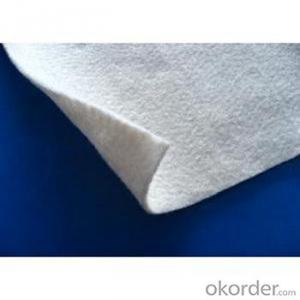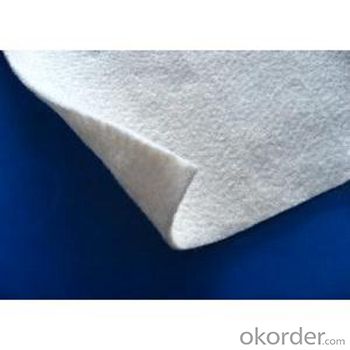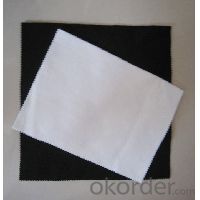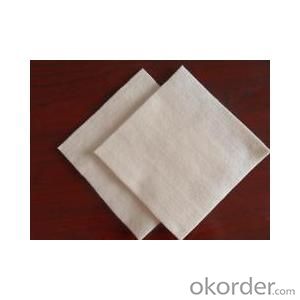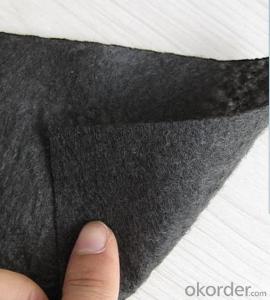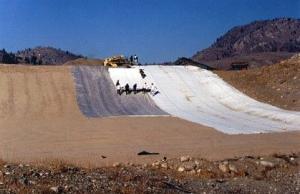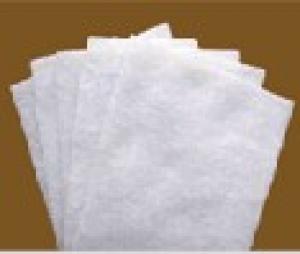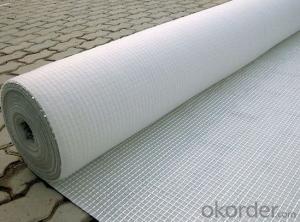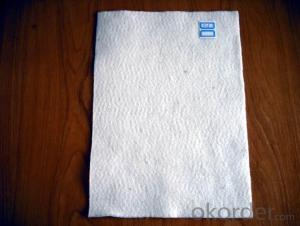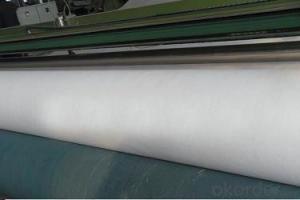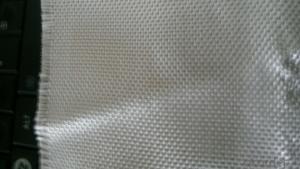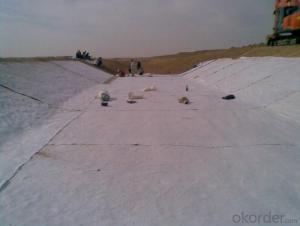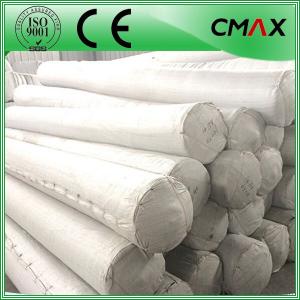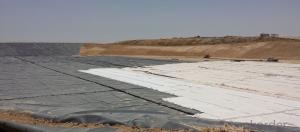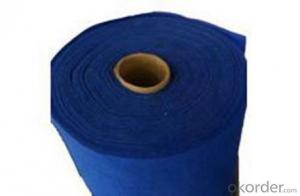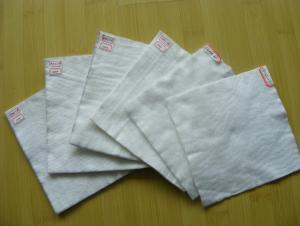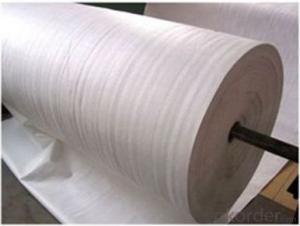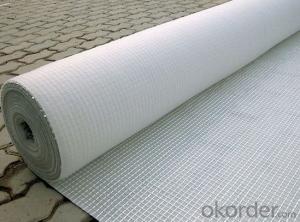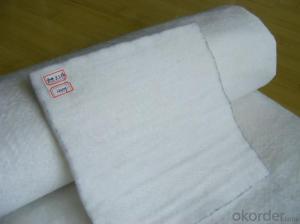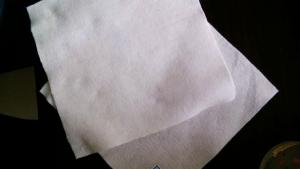Nilex 4551 Non-Woven Geotextile - Non-Woven PET/PP Short Fiber Needle Punched Geotextile for Drainage
- Loading Port:
- China main port
- Payment Terms:
- TT OR LC
- Min Order Qty:
- 1000 m²
- Supply Capability:
- 500000 m²/month
OKorder Service Pledge
OKorder Financial Service
You Might Also Like
Specification
Functions of Short Fiber Needle Punched Non-woven Geotextile:
1. Filtration:
Used as the reversed filter to both prevent sand particulate from passing through and to allow free-flow for water and air.
2.Isolation:
Serving as isolation between ballast and subgrade or subgrade and soft ground in railway, surface course and subgrade or between different dam material in the airport and parking area, to isolate sand, stone in various diameter size from subgrade or other buildings.
3.Reinforcing: Used in engineering of road, railway, earth-rock dam, breakwater, airport, revetment refilling soil, slope and etc, to distribute soil body stress, prevent lateral soil movement and increase stability of soil.
4.Protection:
Used to prevent from scour by wind, wave, tide and/or rain and to protect bank and bottom, to avoid loss of soil and water
Surface Effects of Short Fiber Needle Punched Non-woven Geotextile:
Needle-punched, hot rolled (on single or both sides), jenappe, gum dipping (single or both sides)
Specification
Short fiber nonwoven geotextile technical data
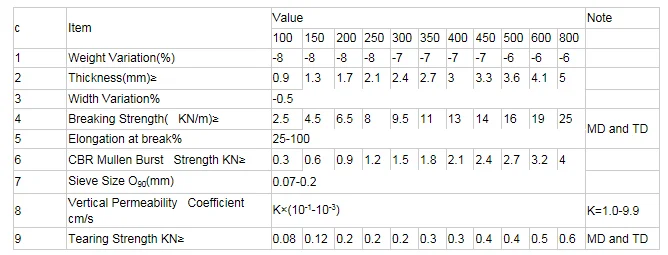
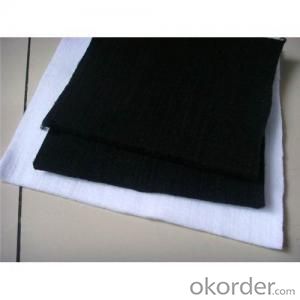
Packaging & Shipping
Packing: PLASTIC FILM INSIDE, AND WOVEN BAG OUTSIDE
Shipping: About 15 days after receipt the deposit
pecifications
geotextile fabric
permeability,filtration,easy for construction
ISO and CE certificate
Good quality and competitive price
Our Service
Quality assurance
1.On a regular basis or as per your request,we entrust national testing agencies to conduct quality inspections
2. Strictly in accordance with the ISO9001-2008 international quality system standard,we monitor and manage the whole process throughout production,quality testing,and measurement to ensure product quality
3. For quality-related construction delay or substandard construction(except for damage or losses due to customer’s responsibility or irresistible natural disasters),we have refunding,replacement,and repair services.We will respond to customers’ feedbacks on quality issues within 24 hours.
After-sales service
1.In order to provide customers with comprehensive technical support,we will provide technical and other related information upon request in a timely manner.
2.In required,we will appoint specialized technicians to the construction site to give technical trainings to construction people,and offer technical guidance throughout the whole construction process.
3.For damage due to shipment and delivery,after we receive the complaint,we will check the issure through provided pictures and videos.If our responsibility is confirmed,we wil offer free replacement.
4.When the construction is completed,as your request,our technical staff may participate in the final acceptance.
FAQ:
Q: What kind of payments does jenor support?
A: T/T, L/C, Cash are accepted.
Q: Do you charge for the samples?
A: Accordeing to our company policy, the samples are free, we only charge the freight fee. And we will return the freight fee during the next order.
Q: Can you produce according to customers' design?
A: Sure, we are professional manufacturer, OEM and ODM are both welcome.
Q: Do you have other products?
A: Yes, please check the pictures:
- Q: How are geotextiles affected by moisture content?
- Geotextiles are affected by moisture content in several ways. Firstly, the moisture content can impact the strength and durability of the geotextile material. Excessive moisture can weaken the fabric and reduce its tensile strength, making it less effective in supporting loads or resisting erosion. Additionally, moisture can promote the growth of bacteria and fungi, leading to the deterioration and degradation of the geotextile over time. Furthermore, moisture content can affect the filtration properties of geotextiles, as it can influence the flow of water through the fabric and its ability to retain particles. Therefore, monitoring and controlling moisture levels is crucial to ensure the optimal performance and longevity of geotextiles in various applications.
- Q: Can plant roots penetrate geotextiles? Which kind of similar material can keep soil and water and let the plant roots pass through it?
- Vegetation network can be, for the best effect of green lawn.
- Q: How do geotextiles contribute to groundwater recharge projects?
- Geotextiles contribute to groundwater recharge projects by acting as a filtration and drainage system. They allow water to pass through while retaining sediment, preventing clogging of the recharge basins or infiltration trenches. This helps to enhance the recharge process, allowing more water to percolate into the ground and replenish the groundwater.
- Q: How do geotextiles help with soil reinforcement in mechanically stabilized earth walls?
- Geotextiles help with soil reinforcement in mechanically stabilized earth walls by providing a strong and stable support system. They act as a barrier between the soil layers, preventing erosion and maintaining the integrity of the wall. The geotextiles distribute the load of the soil evenly, reducing the potential for settlement or failure. Additionally, they enhance the overall stability of the structure by increasing the friction between the soil layers, improving the resistance to lateral forces.
- Q: How are geotextiles tested for quality assurance?
- Geotextiles are tested for quality assurance through a series of standardized tests that evaluate their physical, mechanical, and hydraulic properties. These tests may include assessing tensile strength, elongation, puncture resistance, water permeability, and filtration efficiency, among others. By conducting these tests, manufacturers can ensure that geotextiles meet the required performance specifications and provide consistent quality for various civil engineering applications.
- Q: What are the advantages of using geotextiles?
- Geotextiles offer several advantages such as soil stabilization, erosion control, filtration, and drainage, which can enhance the overall performance and longevity of civil engineering projects. They provide a cost-effective solution by reducing the need for extensive excavation, improving load-bearing capacity, and minimizing long-term maintenance requirements. Additionally, geotextiles are environmentally friendly, allowing water and air circulation while preventing soil erosion, thereby promoting sustainable development and conservation of natural resources.
- Q: What are the design considerations for geotextile-reinforced slopes?
- Some key design considerations for geotextile-reinforced slopes include selecting the appropriate type and strength of geotextile, considering the slope angle and height, evaluating the soil conditions and stability, determining the required length and spacing of reinforcement layers, ensuring proper installation and quality control, and accounting for factors such as water drainage and vegetation establishment. Additionally, the design should consider the long-term durability and maintenance requirements of the reinforced slope.
- Q: What are the maintenance requirements for geotextile installations?
- The maintenance requirements for geotextile installations typically involve regular inspections to ensure proper functioning and longevity. This may include removing any accumulated debris or sediment that could hinder its performance, checking for any signs of damage or wear, and addressing any issues promptly to prevent further deterioration. Additionally, periodic testing and evaluation of the geotextile's performance may be necessary to ensure it is meeting the desired objectives.
- Q: What is the length of the lap when the two-way geogrid is used? What is the geotextile lap length?
- It should be 20cm to 40cm it, geotextiles slightly longer point
- Q: Are geotextiles suitable for use in mining tailings containment?
- Yes, geotextiles are suitable for use in mining tailings containment. Geotextiles are designed to provide strength, stability, and filtration, making them effective in containing and managing mining tailings. They help prevent the migration of fine particles, control erosion, and enhance the overall stability of the containment system.
Send your message to us
Nilex 4551 Non-Woven Geotextile - Non-Woven PET/PP Short Fiber Needle Punched Geotextile for Drainage
- Loading Port:
- China main port
- Payment Terms:
- TT OR LC
- Min Order Qty:
- 1000 m²
- Supply Capability:
- 500000 m²/month
OKorder Service Pledge
OKorder Financial Service
Similar products
Hot products
Hot Searches
Related keywords
